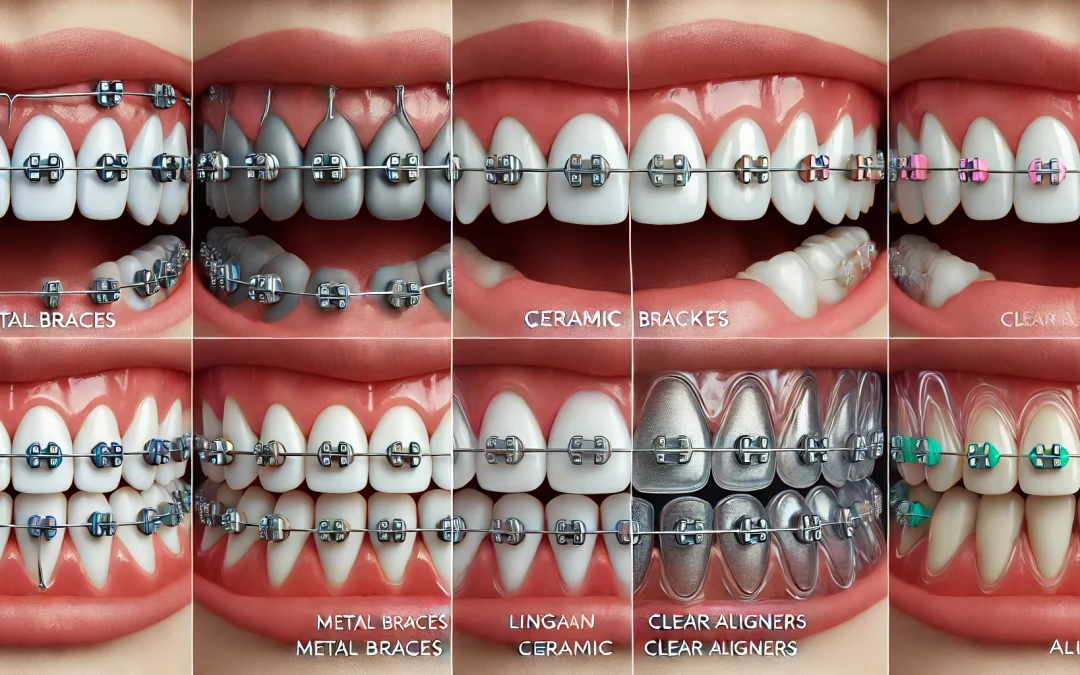Introduction
Orthodontic brackets are a crucial part of teeth straightening treatments, but not all brackets are the same. With multiple options available, choosing the right type can impact comfort, treatment duration, and aesthetics. Whether you’re a patient or a dental professional, this guide will help you understand different types of orthodontic brackets and how to select the best option for specific needs.
1. Metal Brackets (Traditional Braces)
Metal brackets are the most commonly used type in orthodontics. Made from stainless steel, they are durable, cost-effective, and efficient for correcting various dental misalignments.
✅ Pros:
✔️ Strong and effective for all types of misalignment
✔️ More affordable than other types
✔️ Works faster in severe cases
🚫 Cons:
❌ Highly visible on teeth
❌ Can cause slight discomfort due to metal edges
💡 Best for: Patients looking for a reliable and budget-friendly option without prioritizing aesthetics.
2. Ceramic Brackets (Clear Braces)
Ceramic brackets are similar in function to metal brackets but are made from tooth-colored or clear materials, making them less noticeable.
✅ Pros:
✔️ More aesthetic than metal braces
✔️ Effective for moderate to severe misalignment
✔️ Stain-resistant when properly maintained
🚫 Cons:
❌ More expensive than metal braces
❌ Slightly more fragile and prone to breaking
❌ Can cause more friction, leading to a slightly longer treatment time
💡 Best for: Patients who want aesthetic orthodontic treatment but need a fixed option.
3. Lingual Brackets (Hidden Braces)
Lingual brackets are attached to the back of the teeth, making them invisible from the front. They work similarly to traditional braces but are hidden behind the teeth.
✅ Pros:
✔️ Completely invisible from the outside
✔️ Just as effective as traditional metal braces
✔️ Suitable for mild to severe misalignment
🚫 Cons:
❌ More difficult to clean and maintain
❌ Can cause initial discomfort as they sit close to the tongue
❌ Higher cost due to customization
💡 Best for: Adults and professionals who want discreet teeth straightening.
4. Self-Ligating Brackets
Self-ligating brackets use a built-in sliding mechanism instead of elastic bands to hold the wire, reducing friction and making adjustments smoother.
✅ Pros:
✔️ Less discomfort compared to traditional braces
✔️ Faster treatment time due to less friction
✔️ Easier to clean since they don’t have elastic ties
🚫 Cons:
❌ More expensive than regular metal braces
❌ Limited availability in some clinics
💡 Best for: Patients who want less friction, fewer adjustments, and easier maintenance.
5. Clear Aligners (Bracket-Free Option)
While not traditional brackets, clear aligners (such as Invisalign) are a popular alternative. These custom-made, removable plastic trays straighten teeth without the need for fixed brackets or wires.
✅ Pros:
✔️ Nearly invisible and removable
✔️ More comfortable than metal brackets
✔️ No food restrictions
🚫 Cons:
❌ Not suitable for severe misalignment
❌ Requires discipline to wear 20-22 hours per day
❌ Can be more expensive than traditional braces
💡 Best for: Individuals seeking a discreet, comfortable, and removable option for mild to moderate misalignment.
How to Choose the Right Brackets?
Selecting the best orthodontic brackets depends on several factors:
🦷 Aesthetics: If you prefer a discreet look, ceramic brackets, lingual braces, or clear aligners may be the best option.
💰 Budget: Metal brackets are the most affordable, while lingual and self-ligating brackets tend to be more expensive.
⏳ Treatment Duration: Self-ligating brackets and metal braces often offer the fastest results for complex cases.
🧼 Maintenance: If you want an easy-to-clean option, clear aligners and self-ligating brackets are better than traditional options.
💡 Tip: Always consult with an orthodontist to determine the best solution for your specific needs.
Conclusion
Choosing the right orthodontic brackets depends on your treatment goals, lifestyle, and budget. Whether you prefer traditional metal braces, ceramic brackets, or clear aligners, each option offers unique benefits. By understanding your choices, you can make an informed decision and achieve a straighter, healthier smile.
🔹 Which orthodontic option do you prefer? Let us know in the comments!

